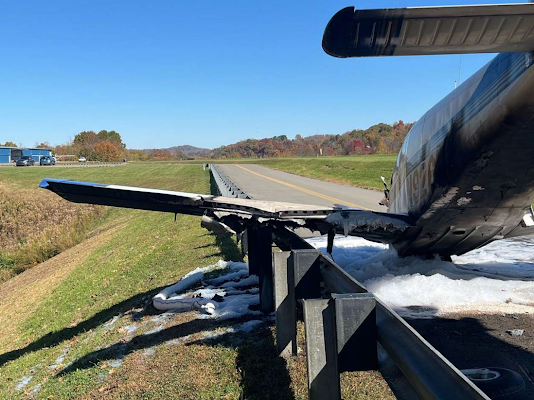- Location: Zephyrhills, Florida
- Accident Number: ERA24FA395
- Date & Time: September 25, 2024, 07:10 Local
- Registration: N889HT
- Aircraft: EVOLUTION AIRCRAFT INC REVO
- Aircraft Damage: Destroyed
- Defining Event: Miscellaneous/other
- Injuries: 2 Fatal
- Flight Conducted Under: Part 91: General aviation - Instructional
On September 25, 2024, about 0710 eastern daylight time, an Evolution Aircraft Inc. Revo weight-shift-control aircraft, N889HT, was destroyed when it was involved in an accident near Zephyrhills, Florida. The flight instructor and student pilot were fatally injured. The aircraft was operated as a Title 14 Code of Federal Regulations Part 91 instructional flight.
The accident occurred during an instructional flight in a weight-shift-control aircraft. A witness reported hearing a popping sound and then saw the aircraft descending in a nose-down attitude with what he thought were flames coming from the aircraft. The aircraft continued to descend and impacted on the terrain. An airport security video captured the aircraft in a nosedown attitude with the wings folded back as it descended. The video showed that in the early morning, low light conditions, the aircraft’s position lights were on. This was likely what the witness thought was flames coming from the aircraft. Postaccident examination of the wreckage confirmed that there was no evidence of an inflight fire; however, a postimpact fire consumed most of the wreckage.
The examination also found that the flight control cables were all connected to their respective connections. The haul back cable was found disconnected at the “J” hook, and the “J” hook was otherwise intact. The haul back cable allowed the wings to be folded for transport and storage of the aircraft. An inflight disconnection would have allowed the wings to fold back during flight. Based on this information, it is likely that the flight instructor did not secure the end of the haul back cable into the “J” hook prior to departing and the haul back cable detached during flight, which allowed the wings to fold up.
- Probable Cause: The flight instructor’s failure to ensure the haul back cable was securely connected to the “J” hook prior to departing on the accident flight, which resulted in the cable becoming disconnected and the wings folding up during flight.



















